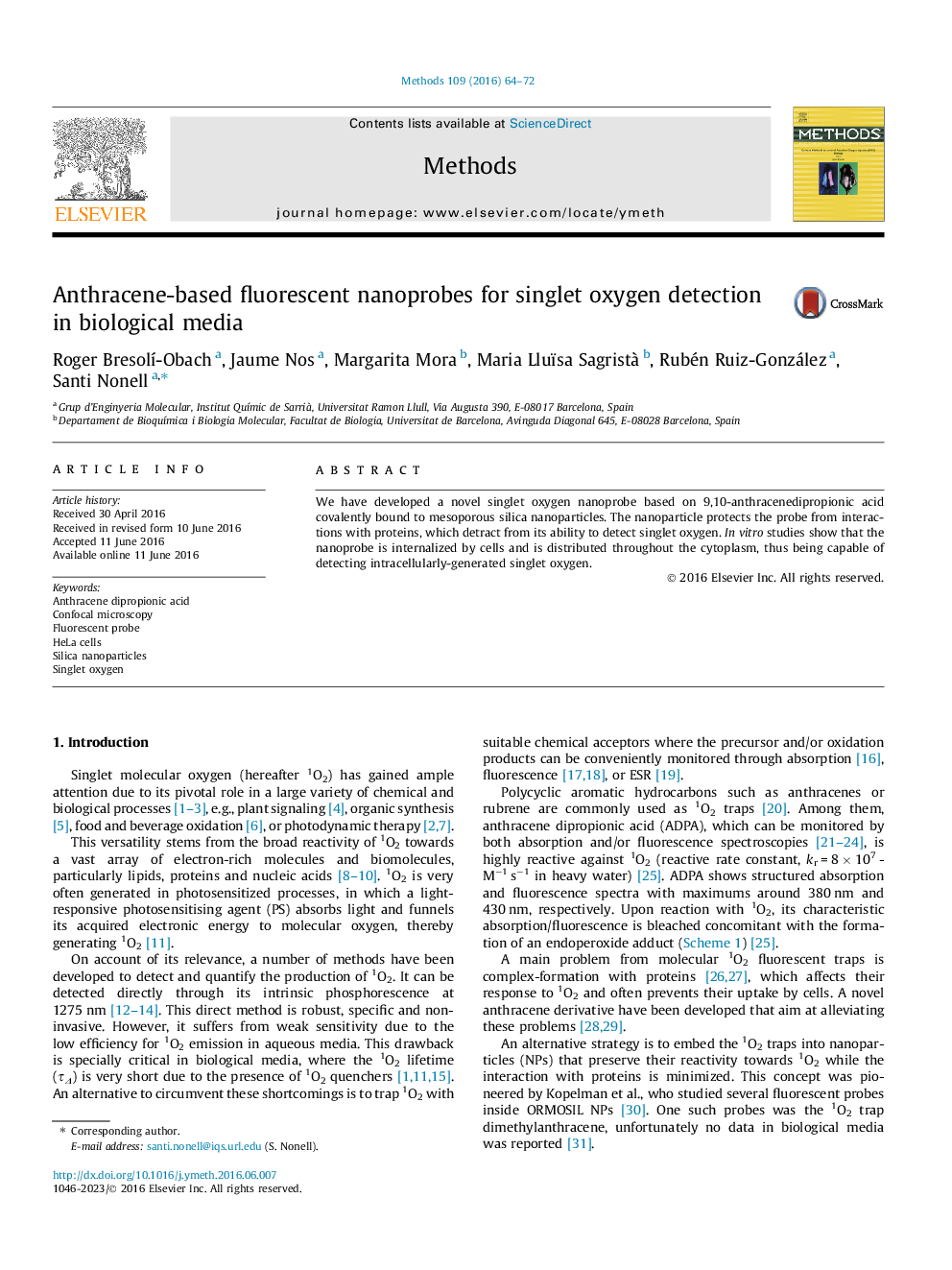| Article ID | Journal | Published Year | Pages | File Type |
|---|---|---|---|---|
| 5513676 | Methods | 2016 | 9 Pages |
â¢A novel fluorescent probe for singlet oxygen has been developed based on silica nanoparticles.â¢The nanoprobe is not affected by photosensitiser electrical charge or solvent polarity.â¢The nanoparticle prevents direct interactions with proteins and photosensitisers.â¢NanoADPA allows detection of intracellular singlet oxygen.
We have developed a novel singlet oxygen nanoprobe based on 9,10-anthracenedipropionic acid covalently bound to mesoporous silica nanoparticles. The nanoparticle protects the probe from interactions with proteins, which detract from its ability to detect singlet oxygen. In vitro studies show that the nanoprobe is internalized by cells and is distributed throughout the cytoplasm, thus being capable of detecting intracellularly-generated singlet oxygen.
Graphical abstractDownload high-res image (165KB)Download full-size image
